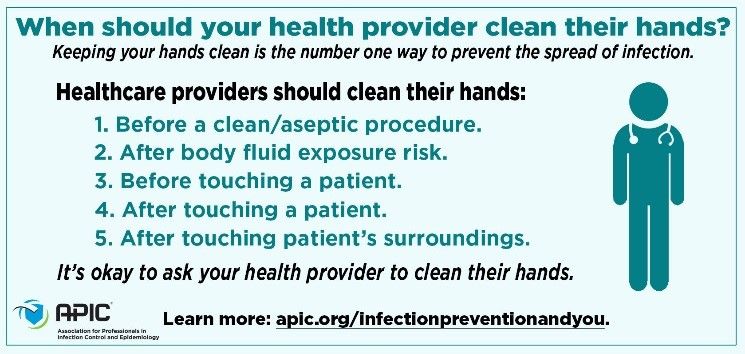Hand Hygiene in Hospitals Increases with Patient Involvement
New research reveals a way to help increase healthcare provider hand hygiene by empowering patients to take an active role.
Despite decreasing statistics, healthcare-associated infections (HAIs) continue to be a major source of infections in the United States. In fact, the Centers for Disease Control and Prevention (CDC) reports that, “on any given day, about 1 in 25 hospital patients has at least one HAI.” Arguably, one of the best ways to prevent HAIs is through performing appropriate hand-hygiene; however, reports reveal that 70% of healthcare workers and 50% of surgical teams do not routinely practice hand hygiene. Now, researchers from the West Virginia University (WVU) School of Medicine may have come up with a way to help decrease those numbers by empowering patients to take an active role in their provider’s hand hygiene.
The new research, published in the American Journal of Infection Control, and led by Allison Lastinger, MD, of the WVU School of Medicine, details the results of a cross-sectional, anonymous, self-administered questionnaire that was administered to 114 parents of hospitalized children and 108 adult patients (from December 2015 to June 2016), as well as primary care physicians (29 residents and 60 attending physicians in November 2015) at the WVU Medicine J.W. Ruby Memorial Hospital. The questionnaire surveyed the respondents on their feelings about a new patient empowerment tool (PET), designed to enable patients to take an active role in encouraging healthcare provider hand hygiene.
The results of the questionnaire revealed that 64% of the adult patients and 70% of the parents felt that using the PET “made them feel more in control of their care,” according to a press release on the study, and most of the respondents from both groups felt comfortable using the tool to remind healthcare workers to perform hand hygiene. The results showed that the parents were about 20% more likely to remind a physician about hand hygiene than an adult patient.
Conversely, only about 54.9% of the healthcare provider respondents felt that “patients should be involved in reminding providers to perform hand hygiene.” Among those who felt that patients should be involved, the majority stated “that they would prefer a patient make the request verbally, rather than using the PET to remind them to perform hand hygiene,” according to the press release. Reasons for not supporting patient involvement included:
- It is not the patient’s responsibility to remind providers to perform hand hygiene.
- Such reminders are embarrassing to the provider.
- The reminders will negatively impact the patient-provider relationship.
Involving patients in the hand hygiene initiatives is not a new practice. Indeed, Thomas Sandora, MD, MPH, hospital epidemiologist at Boston Children’s Hospital, spoke with Contagion® and provided recommendations on discussing hand hygiene amongst healthcare providers and between patients and healthcare workers.
Because of the initiative, hand hygiene at Ruby Memorial Hospital rose from 48% in 2015, to 75% in 2016. Speaking on these findings in the press release, Dr. Lastinger remarked, “48% is pretty standard, [and] so 75% is phenomenal.” She elaborated, “Based on the results of this study, patient empowerment appears to be an effective strategy to facilitate healthcare workers’ adherence to hand hygiene, but acceptance of the PET by providers remains a challenge. Barriers to hand hygiene adherence among healthcare providers should be identified and addressed.”
Linda Greene, RN, MPS, CIC, FAPIC, 2017 Association for Professionals in Infection Control and Epidemiology (APIC) president, added, “Patient involvement is increasingly recognized as an important component of hand hygiene improvement strategies. Organizations must realize that patients and families are an important part of the healthcare team, and their involvement in hand hygiene campaigns should be encouraged.”
A graphic on health provider hand hygiene was provided with the press release:

